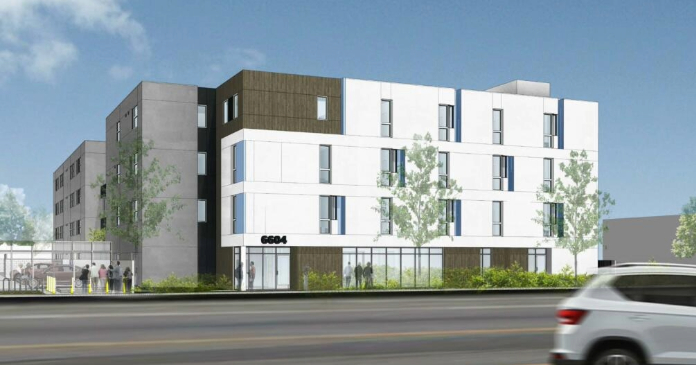On April 4, YieldPro editors asked Trepp, Inc. Research Director Stephen Buschbom to share his company’s latest analysis of the multifamily sector. Trepp is a data and analytics provider for structured finance, commercial real estate (CRE) and banking markets based in New York with locations in London and San Francisco.
The multifamily sector’s ability to rebound swiftly during challenging economic times is a testament to its resilience. Despite declining household formation, rising supply deliveries, and weakening demand, delinquency rates remain low when compared to the office, retail, and hospitality sectors. The interview follows:
1. Trepp wrote in its weekly blog The Rundown that sellers are motivated by what appears to be a more liquid financing market and that the recent offerings could be an effort at price discovery. Do you mean sellers might be testing the waters to see just how much buyers are willing to pay?
• Yes. By price discovery we meant that property owners would be testing the waters. The market is more liquid than it was, say, six months ago, but it’s nowhere as liquid as it was in 2018 or 2019. Or even 2021.
2. At what cap rates are buyers and sellers coming together to make a deal?
• In the current multifamily market, cap rates vary widely based on location, property quality, and tenant stability, but we are observing a range that generally spans from four percent to six percent. This range is broader in some markets, particularly where there’s higher risk or greater expectation of growth.
• To facilitate deals, buyers and sellers are finding common ground within this spectrum, with sellers adjusting expectations to reflect the current economic environment and buyers seeking value that aligns with the increased cost of financing.
• As an example, Essex Property Trust recently bought stakes in four apartment properties in Washington and California at a 5.25% cap rate. Those would have been a four percent cap two years ago.
3. Are you noticing any significant changes in the capital markets that could help push more transaction activity this year?
• We’re observing several key shifts in the capital markets that could stimulate more transaction activity in the multifamily market this year. First, there’s a gradual stabilization of interest rates, which, after a period of rapid increases, may provide more predictability for financing.
• Second, we’re seeing an influx of global capital targeting U.S. real estate as a safe haven, which could boost liquidity in the market. There’s plenty of capital for CRE on the sidelines (Preqin estimates about $400 billion), so it’s just a matter of investors seeing stability and perhaps a path to growth before it starts getting deployed.
• Finally, lenders and investors are adapting to the new economic landscape, with more creative financing solutions and a renewed focus on prime locations and asset quality, potentially leading to an increase in transaction volumes.
4. Which buckets of capital are most available today for multifamily, for what types of deals and which lenders are showing interest?
• For multifamily deals, we’re currently seeing a diverse array of capital sources showing interest, each with their preferred deal types:
— Agency Lenders (Fannie Mae, Freddie Mac, and HUD): These continue to be the most active sources of capital for multifamily financing, particularly for stabilized properties and affordable housing projects. They offer competitive rates and terms, making them attractive for a wide range of transactions.
— Banks and Credit Unions: Local and regional banks, as well as credit unions, are increasingly active, focusing on lending to high-quality projects and developers with strong track records in prime markets. They are particularly interested in construction loans, bridge financing, and permanent financing for smaller to mid-size deals.
— Private Equity and Institutional Investors: These sources are targeting value-add and opportunistic investments, showing a strong appetite for deals that offer potential for significant yield improvement through renovation, repositioning, or improved management.
— Debt Funds and Alternative Lenders: They are filling the gaps left by more traditional lenders, providing financing for higher-leverage deals, transitional properties, or borrowers seeking more flexible terms.
— Life Insurance Companies: Focusing on low-leverage, high-quality assets in prime locations, life insurance companies offer competitive rates for long-term financing, though they are generally selective in their lending.
• Each of these capital sources is navigating the current market with a distinct focus, reflecting varying risk appetites and strategic priorities in the multifamily sector.
5. What data have you gleaned from the recent multifamily transactions that Trepp is tracking?
• There are a few different trends that we have gleaned from recent multifamily transactions.
— Geographical Preferences: Sunbelt states are still very active, where population and job growth are outpacing national averages. These areas are attracting significant investment due to their higher potential for rental income growth and property value appreciation.
— Size and Type of Transactions: Mid-size to large transactions, particularly those involving portfolios or high-quality assets in prime locations, are dominating the market. Suburban multifamily properties have also done well, driven by the demand for more spacious living options post-pandemic and a shortage of homes available for sale that has kept some would be buyers on the sidelines.
— Investor Profiles: Institutional investors and private equity funds are very active, targeting value-add and opportunistic deals. There’s also a significant amount of foreign capital entering the market, looking for stable, long-term returns.
— Financing Conditions: Despite tighter lending conditions and higher interest rates, deals are still closing, albeit with more conservative capital structures. Loan-to-value ratios are decreasing, and there’s a greater emphasis on strong sponsorship and asset quality.
— Cap Rates and Pricing: Cap rates have been adjusting upward slightly, reflecting the increased cost of capital and a more cautious investment approach. However, prime assets in high-demand markets are still commanding premium prices.
— Rental Growth Expectations: There’s an optimistic outlook on rental growth, especially in markets with strong job growth and limited new supply. This optimism is driving investor interest despite broader economic uncertainties.
• These insights indicate a market that’s selectively active, with investors and lenders displaying discernment in their strategies, favoring quality and long-term potential amid a backdrop of economic and financial market adjustments.
6. Are lenders still more interested in working with owners (kicking the can further down the road) rather than foreclosing and becoming property owners? If so, what will bring a sea change and when might that start to happen, if it hasn’t already?
• Yes, in the current market environment, lenders generally prefer to work with property owners to extend loan terms or restructure debt rather than proceeding with foreclosure. This approach is driven by several factors:
— Economic Uncertainty: In times of economic fluctuation, lenders may find it more advantageous to avoid the costs and complexities associated with foreclosure and property management, especially if the market outlook suggests potential recovery.
— Regulatory and Balance Sheet Considerations: Foreclosure can have regulatory implications for lenders and affect their balance sheets negatively. By working with borrowers, lenders can potentially avoid these issues.
— Real Estate Market Conditions: If the real estate market is experiencing lower demand or decreasing property values, lenders might prefer to wait for a more favorable market to sell or manage the property, betting on a future upturn.
• A sea change in this approach could be prompted by several developments:
— Significant Economic Recovery: A strong and sustained economic recovery could improve property cash flows and increase market demand, making foreclosed properties more attractive to purchase and easier to sell at favorable prices.
— Regulatory Changes: New regulations or changes in financial reporting standards could alter the cost-benefit analysis of foreclosure versus loan modification for lenders.
— Market Saturation of ‘Kicked Cans’: An accumulation of non-performing loans that have been repeatedly restructured without fundamental improvements in property performance might force lenders to reconsider their strategies.
• The timing of such a shift is difficult to predict and would depend on broader economic conditions, regulatory policies, and real estate market dynamics. If the market starts to see a sustained improvement in economic indicators and real estate fundamentals, lenders might begin to take a more aggressive stance on non-performing loans. However, as long as the current conditions of uncertainty and market softness prevail, the inclination to avoid foreclosure is likely to continue.
7. In which markets are multifamily transactions primarily happening? In which submarkets?
• Multifamily transactions are currently most active in markets that offer a combination of economic growth, demographic trends favoring rental housing, and a favorable regulatory environment for landlords and developers. Here’s a broad overview of where transactions are concentrated:
— Sunbelt States: Markets in the Sunbelt states, including markets in Texas, Arizona, Florida, and the Carolinas, are seeing significant activity. These regions benefit from population growth, job creation, and a relatively business-friendly environment.
— Suburban Areas: Suburban multifamily has seen strong interest, driven by the demand for more space, affordability, and a better quality of life. Suburbs of major metropolitan areas, especially those within commuting distance to urban job centers, are particularly attractive.
— Tech Hubs: Cities known for their tech industries, such as Seattle, San Francisco Bay Area, and Boston, continue to attract multifamily investments, although the pace may vary based on current market valuations and the impact of remote work trends. These areas typically offer high-income tenant bases and robust rental markets but also face high construction costs and regulatory hurdles.
— Emerging Markets: There’s growing interest in secondary and tertiary markets that offer higher yield opportunities compared to the more saturated primary markets. Cities like Boise, Nashville, and Salt Lake City are drawing attention for their economic resilience, lifestyle appeal, and growth prospects.
• Within these markets, the specific submarkets showing the most activity tend to have several common characteristics: strong employment growth, population increases, limited housing supply, and lifestyle amenities that attract renters, such as retail, dining, and green spaces. As investors continue to seek both stability and growth potential, these areas are likely to remain focal points for multifamily transactions.
8. Which multifamily markets are showing the most distress?
The three MSAs with the highest delinquency rate for securitized multifamily loans are Charlotte, Detroit, and Pittsburgh at 4.87 percent, 3.63 percent, and 3.07 percent respectively.
9. What is Trepp’s forecast for interest rates for the rest of 2024? Cuts or no cuts?
• We tend to align with what the Fed has signaled (three cuts).
Note from YieldPRO: The day after this interview, the U.S. Bureau of Labor Statistics released its latest labor report with a surprise that rendered widely divergent forecasts around interest rates.
Although inflation has slowed from two years ago, the new labor data indicates that U.S. consumer prices rose 3.5 percent year over year in March—the third straight month that inflation has accelerated. Together, rent (shelter) and gasoline prices contributed more than half of the monthly increase.
Many pundits are wondering if the Federal Reserve will follow through with its anticipated rate cuts this year, push back the timeline or even put off any rate cuts until 2025.
According to the CME FedWatch tool, the new market expectation is for two rate cuts this year, with the first cut occurring in September.
JPMorgan Chase CEO Jamie Dimon delivered a worse-case scenario in his annual letter to shareholders, projecting interest rates could spike to eight percent or more. He also is less optimistic than the broader market that the economy will navigate a soft landing, based on what he sees as “persistent inflationary factors.”













